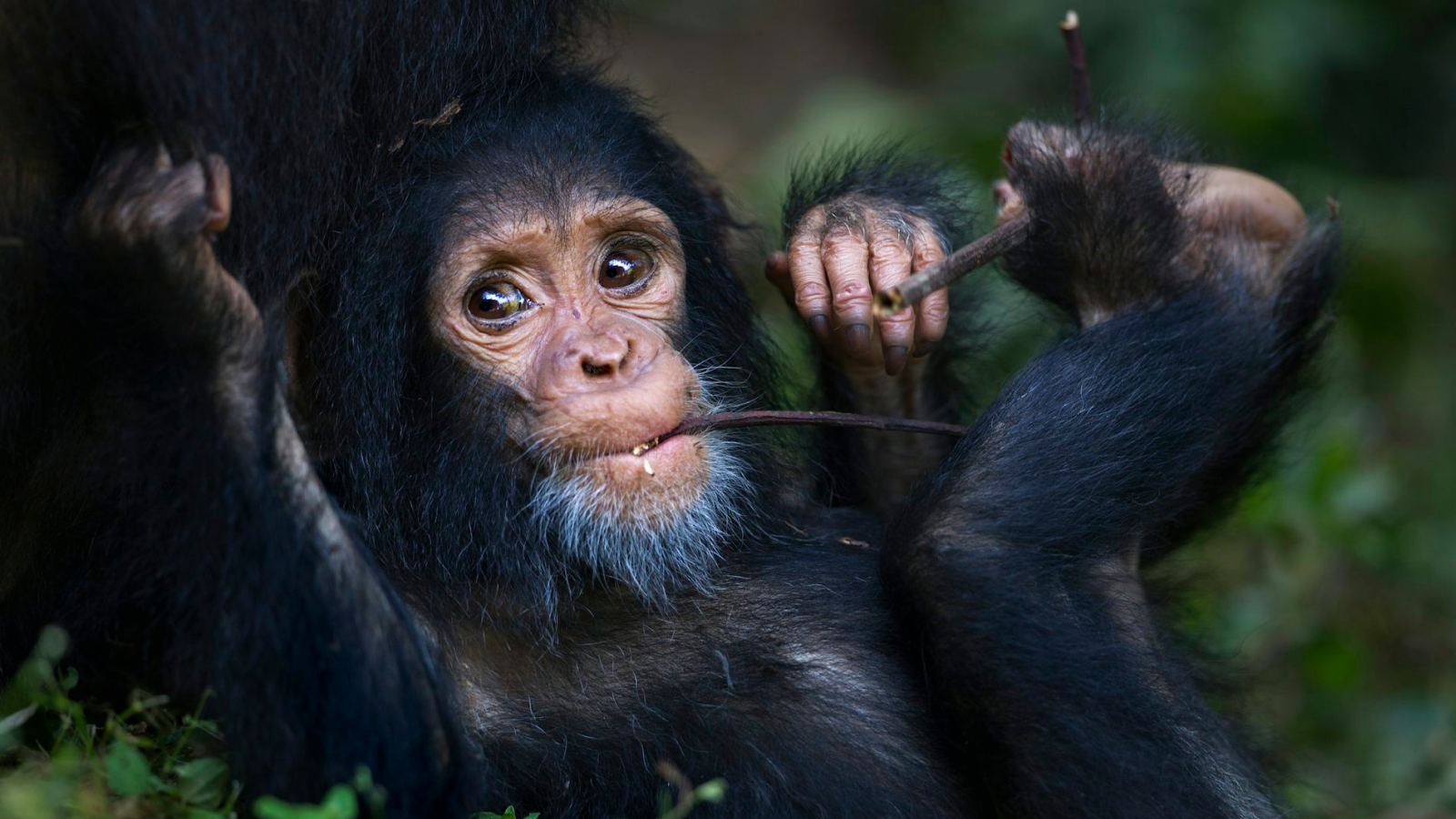13 Extremely Strange Animal Feet
Introduction
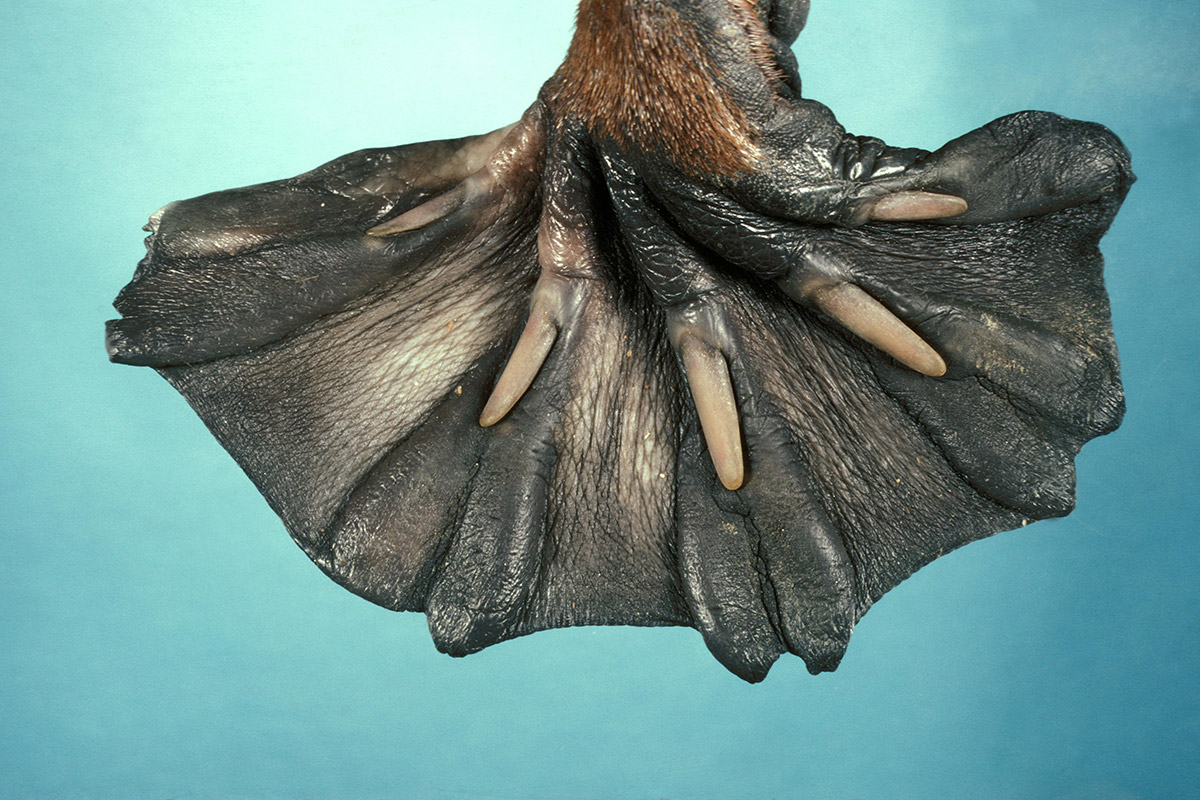
Across the animal kingdom, feet come in an astonishing variety of shapes, and are equipped with an impressive array of highly specialized adaptations.
Some feature sturdy claws that can burrow tunnels in densely-packed dirt. Others sport sharp, curving talons for catching and clutching fast-moving, squirmy prey. They may use gripping structures to scale vertical surfaces, or deploy venomous spikes to defeat rivals or predators.
Whether they're used as digging tools, grasping suckers or killing machines, animal feet can be downright bizarre. Here are some of the most intriguing examples.
Tip-toe tapir
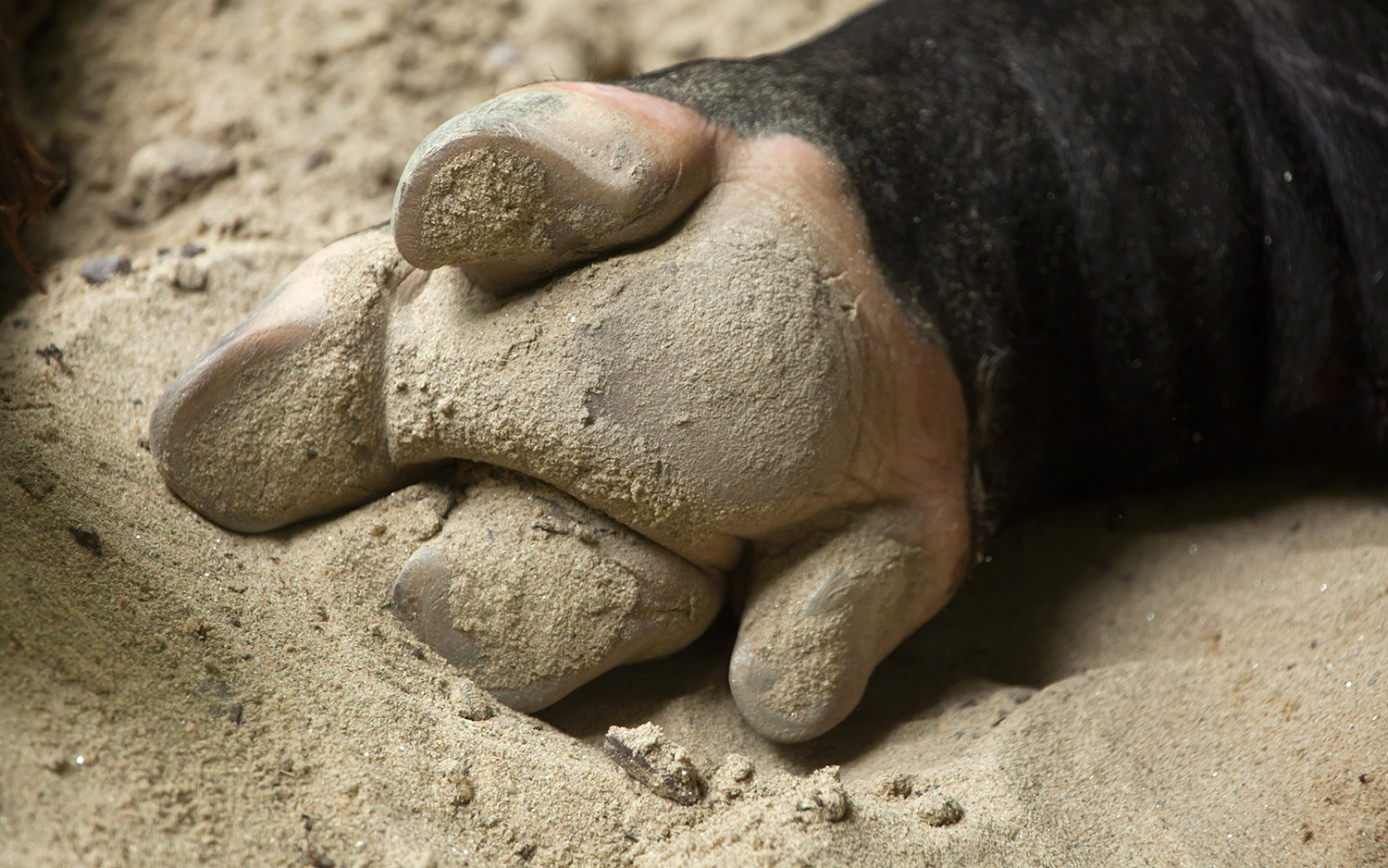
Many animals have hooves, but did you know that tapirs have multiple hooves on each foot?
Tapirs, which are native to South America and parts of Asia and are closely related to rhinos, are known for their prehensile, elephant-like mini-trunks. But their feet are also very unusual. They have four splayed toes on their front feet and three toes on their hind feet; and all of the toes are covered by hardened nails, so they resemble very small hooves. Tapir feet are mesaxonic, which means that the central toe is the biggest and forms the foot's axis. One digit on the front foot is smaller than the rest and is typically used only when the tapir is navigating soft, muddy ground, according to the Animal Diversity Web.
Gravity-defying geckos
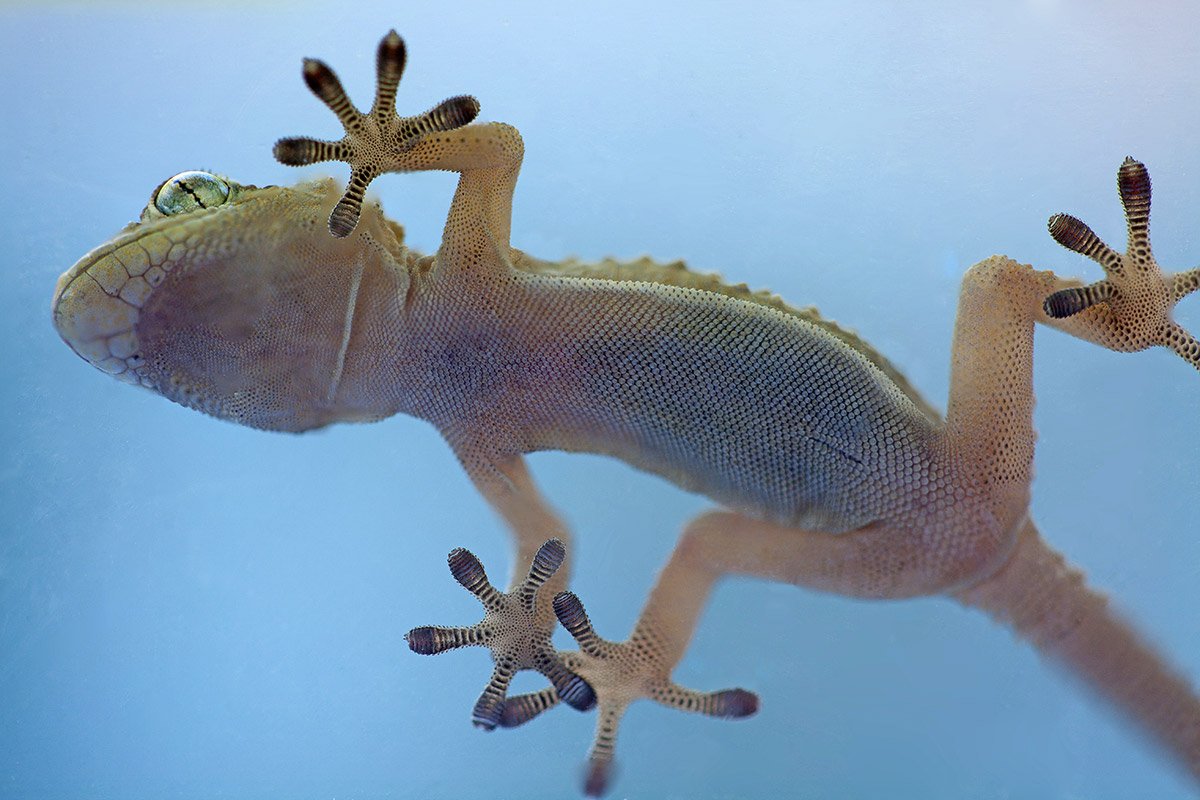
Geckos can run up walls and even hang upside down not because their toes are sticky, but because they're covered with hundreds of tiny hairs, known as setae, which branch off into even tinier filaments. Electrons on these minuscule hairs bond with molecules on other surfaces through electromagnetic attraction, enabling the gecko to attach and remove their feet quickly enough to skitter up vertical surfaces and across ceilings. Their unusual feet have inspired technology such as handheld paddles that could help people scale buildings, and a non-irritating tape that can seal wounds.
Mountain-climbing alpacas
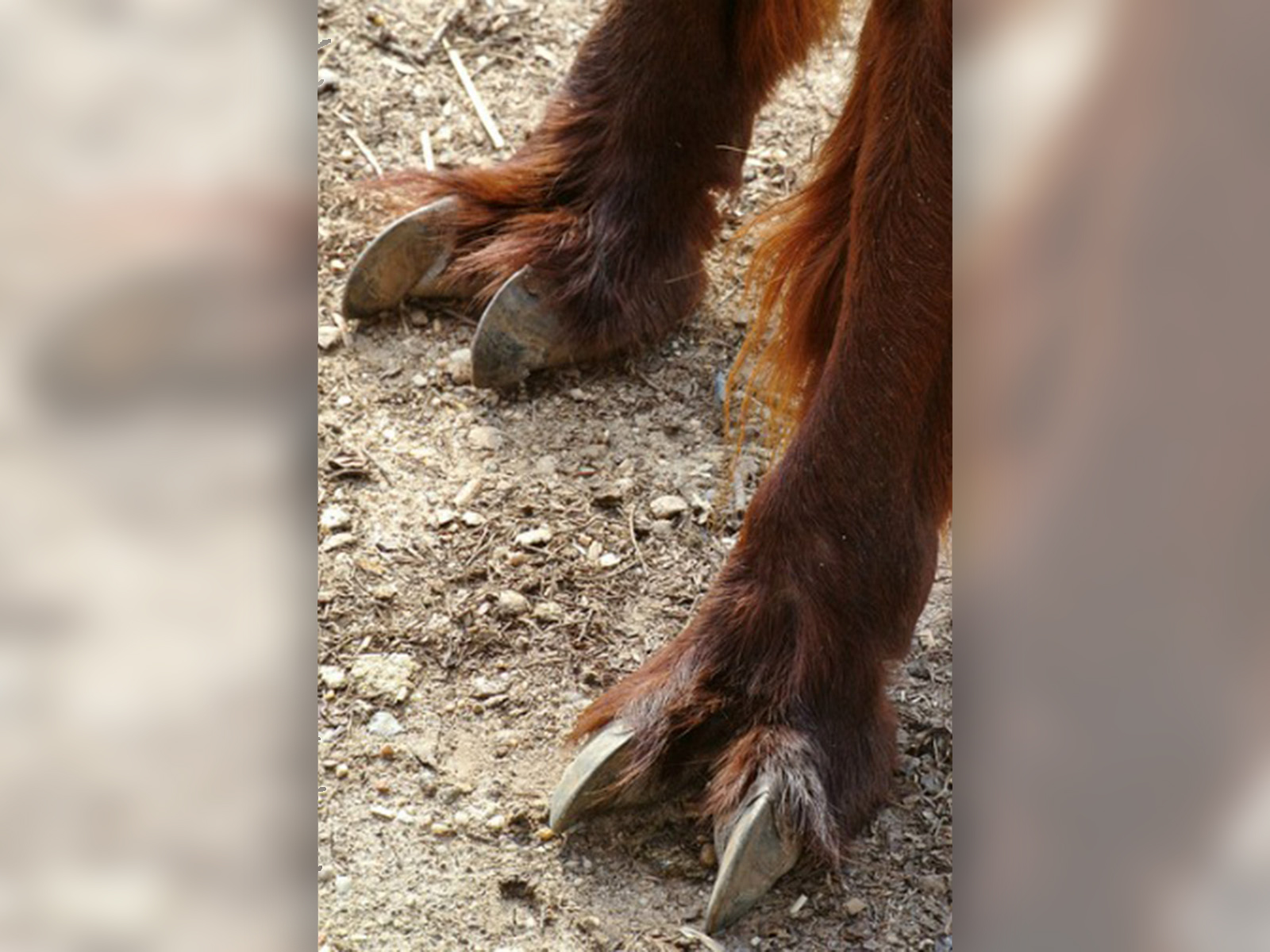
The sturdy toes and furry feet of alpacas help them navigate their chilly, high-altitude Andes mountain range homes in South America. These domesticated ruminants belong to the camelid family, which also includes camels, dromedaries, llamas, guanacos and viçunas — alpacas' closest relatives in the group — and all camelids have two toes on each foot. The toe has a soft pad tipped by a robust nail; alpacas' nails are constantly growing, and are worn down by walking over the rocky ground.
Get the world’s most fascinating discoveries delivered straight to your inbox.
Dainty rhinos
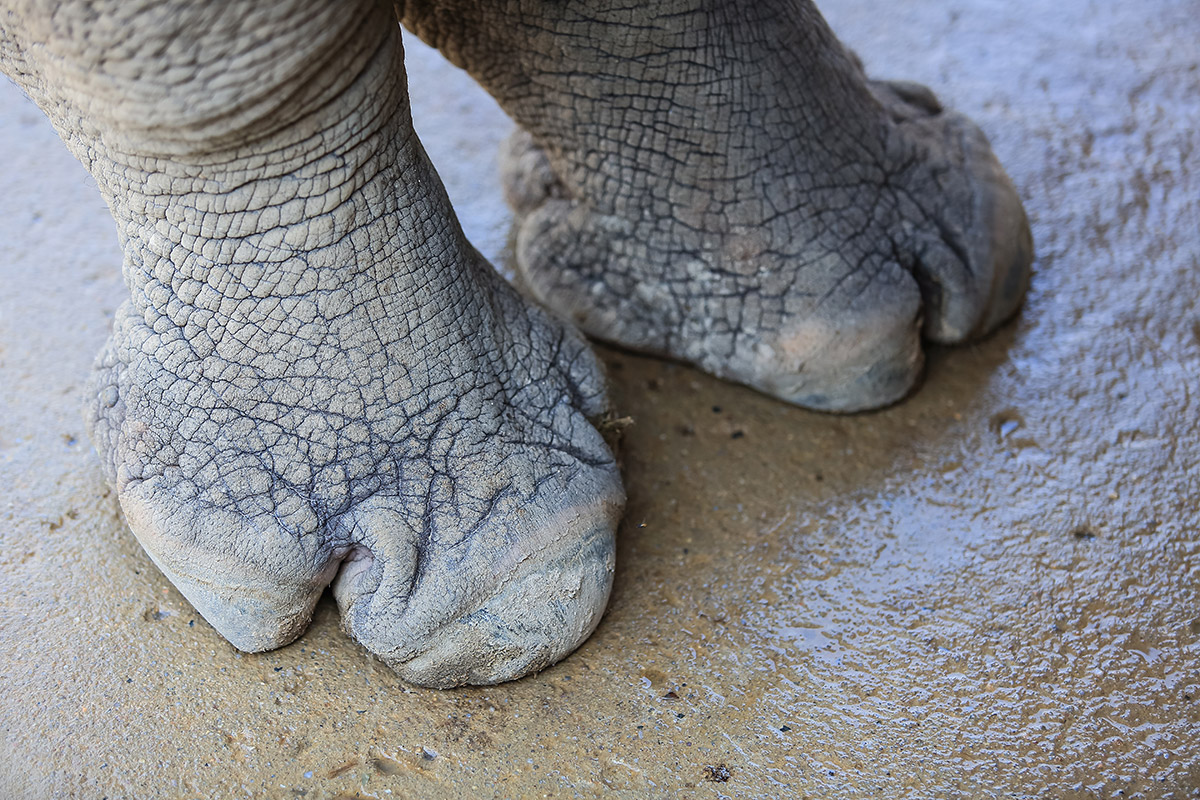
Considering their size and heft, rhinos have surprisingly dainty feet. These imposing animals can measure up to 15 feet long (4.6 meters) and weigh as much as 5,000 pounds (2,400 kilograms), but their bulky heads and enormous bodies are supported by legs and feet that seem downright puny by comparison — especially when compared to the sturdier limbs of other large land mammals such as elephants. Rhino legs taper to feet that are circular in shape and have three toes, and when they walk, they put more pressure on their insteps, "which is weird and we don't really understand it yet," John Hutchinson, a professor of evolutionary biomechanics at the Royal Veterinary College's structure and motion laboratory, previously told Live Science.
Scaly mosquitoes
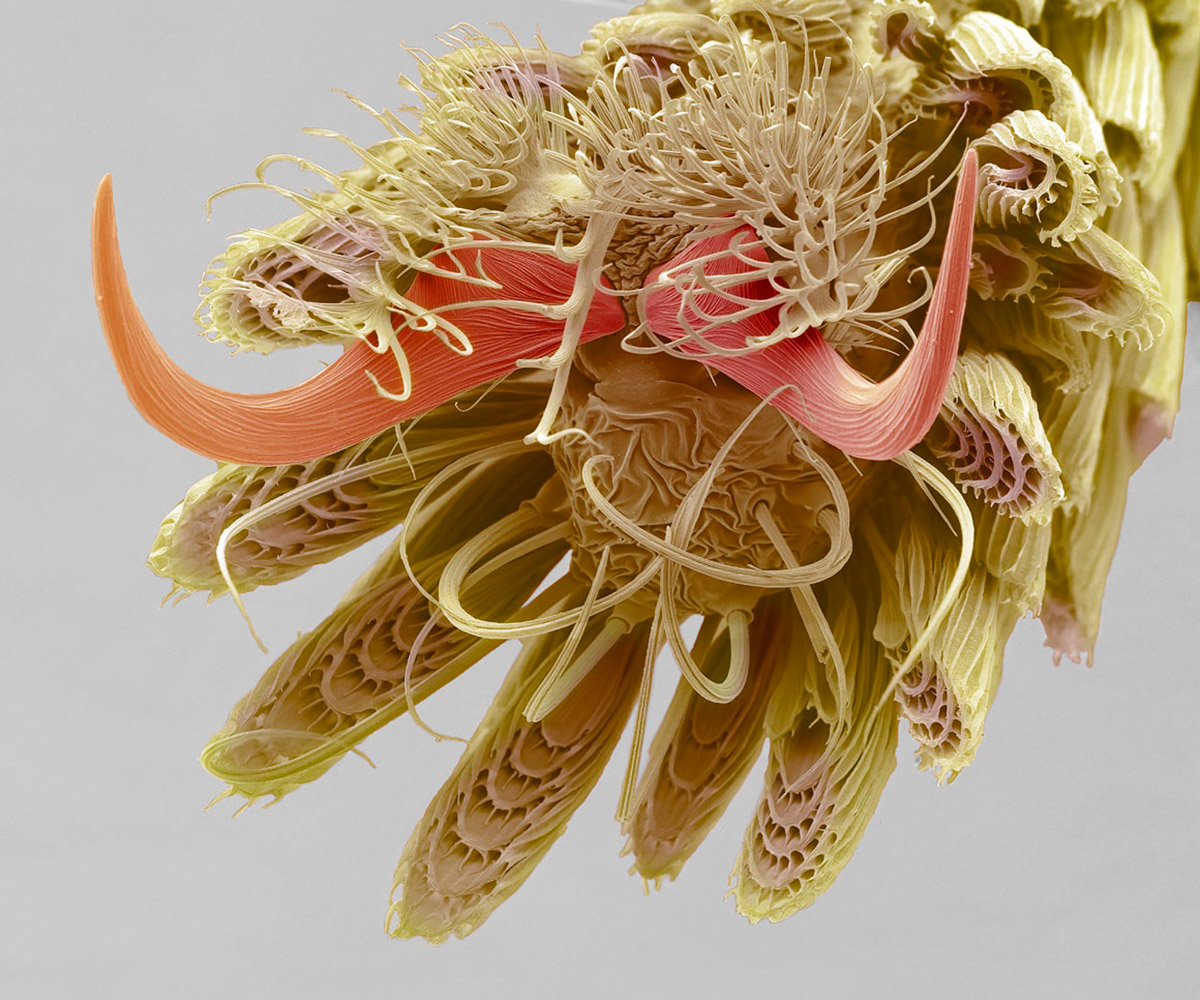
A photo that went viral on Reddit in November 2017 had people scratching their heads over what it might be — emerging from a shingled stalk, a pinkish moustache-shaped object rested among bizarre whorls and swirls and curlicue structures, all of which made the object's identity impossible for most viewers to guess. The mysterious image was a mosquito's foot magnified 800 times. Remarkable details such as the pulvillus — a hair-tipped adhesive pad — scales and a claw were captured by photographer Steve Gschmeissner using a scanning electron microscope, and earned him a nod in the 2016 Royal Photography Society International Images for Science contest.
Venomous platypuses

What isn't weird about the platypus? These duck-billed mammals look like they were stitched together by a rogue taxidermist from the body parts of unrelated animals, as a prank. They have flattened, beaver-like tails, sleek and furry bodies, webbed feet and a bill that could have been borrowed from a mallard. All mammals give birth to live young, but not the platypus — they lay eggs, as mammals' distant ancestors did. But let's get back to their feet; in addition to being webbed, males sport pointy spurs loaded with venom, which scientists suspect is used during combat with rival males during mating season.
Two-toed ostriches
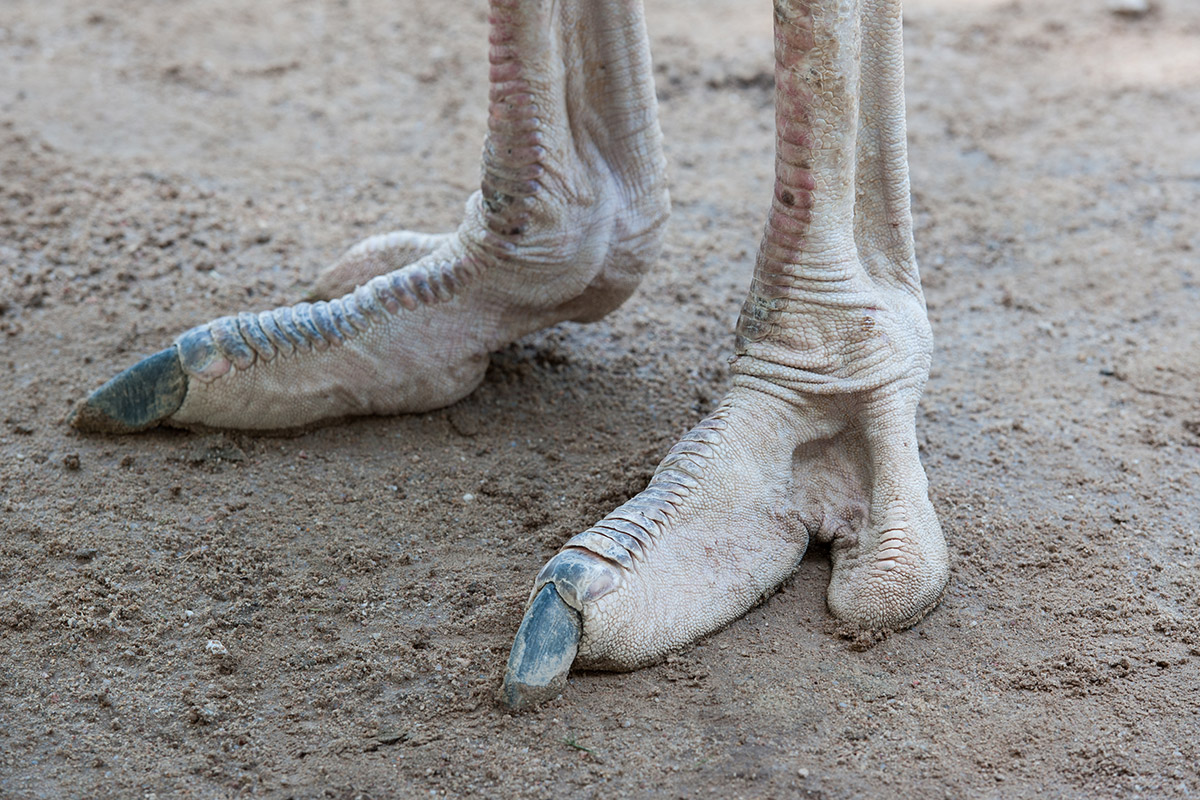
Perhaps because ostrich feet are so large and powerful, they invite comparisons to the feet of extinct meat-eating dinosaurs that lived millions of year ago. Ostriches — which are living dinosaurs, as are all modern birds —are the only birds to have two toes (all other birds have three or four toes). One toe is much larger than the other, and is tipped with a claw that can measure up to 4 inches (10 centimeters) in length. Ostriches' robust legs and two-toed feet can deliver lethal kicks, and they have been observed running at speeds of more than 37 miles per hour (60 km/h) for over 30 minutes, according to a study published in 2011 in the Journal of Experimental Biology.
Water-walking basilisks
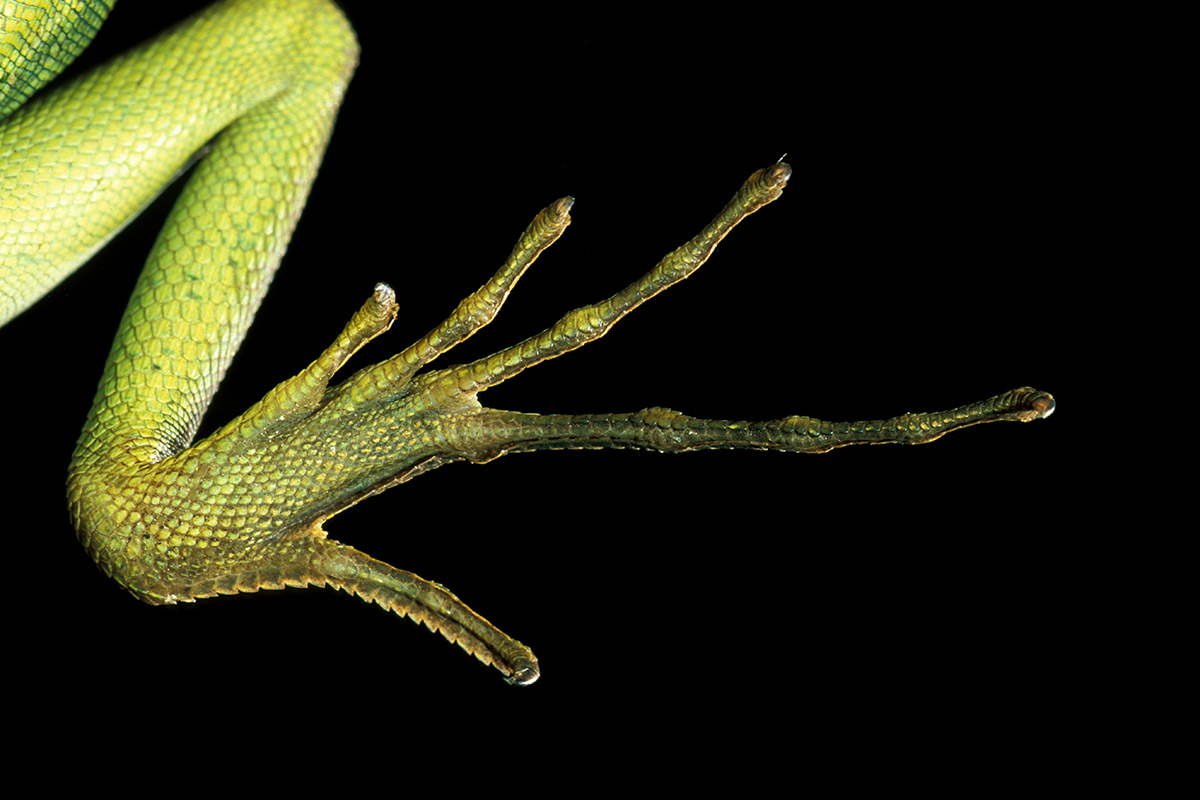
The basilisk's remarkable ability to seemingly walk on water has earned it the nickname "Jesus lizard," though it crosses bodies of water not by walking but by running, relying on the speed and peculiar scooping motion of its unusually-shaped feet to skitter over a watery surface. To keep from sinking, basilisks rapidly churn their legs when they run, and their large fringed feet capture pockets of air that help to hold them aloft as they move forward, according to the American Museum of Natural History.
High-flying eagles
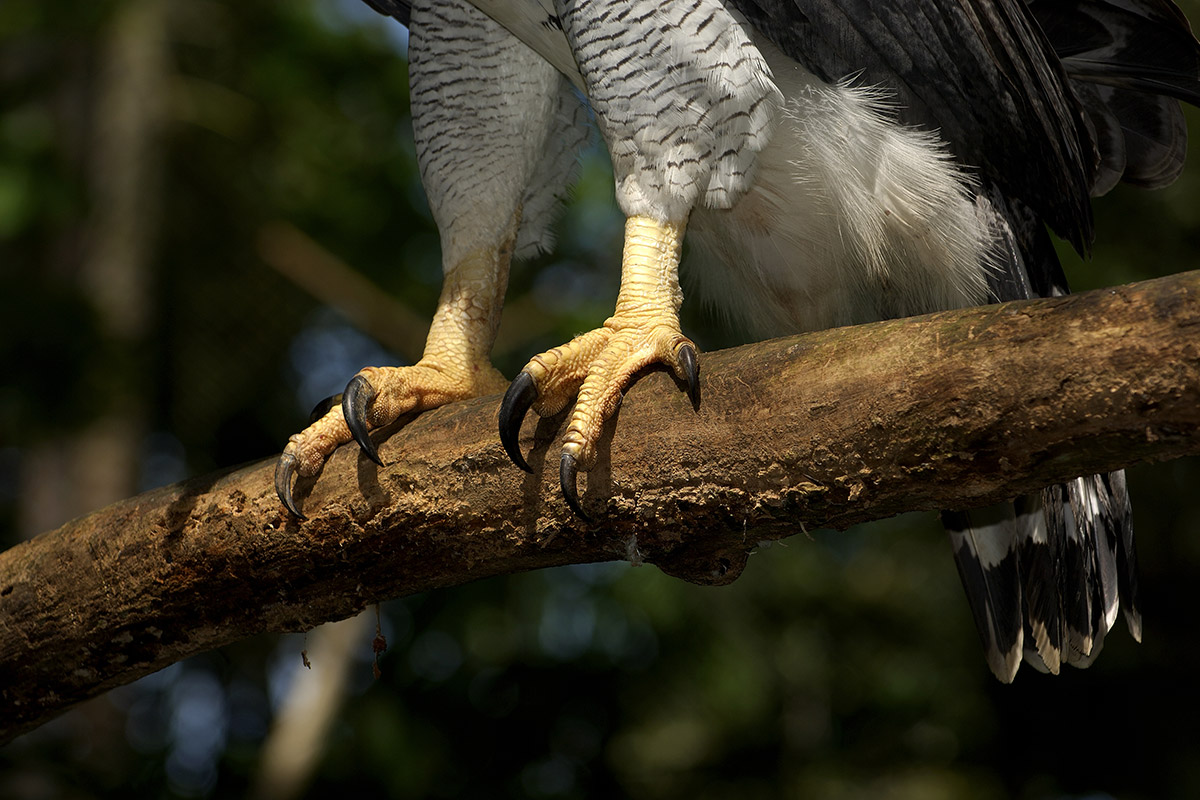
With its crest of dark feathers framing a pale gray face and a steely golden-eyed glare, the harpy eagle (Harpia harpyja) is an impressive sight, and they are the heaviest and most powerful birds of prey, according to the San Diego Zoo. Part of their hunting success is due to their massive curved talons, which can measure up to 5 inches long (13 centimeters) — even longer than a grizzly bear's claws. Their powerful feet can generate hundreds of pounds of force to crush and kill their prey, which includes monkeys and sloths that can weigh as much as 17 pounds (7.7 kilograms).
Clawed armadillos
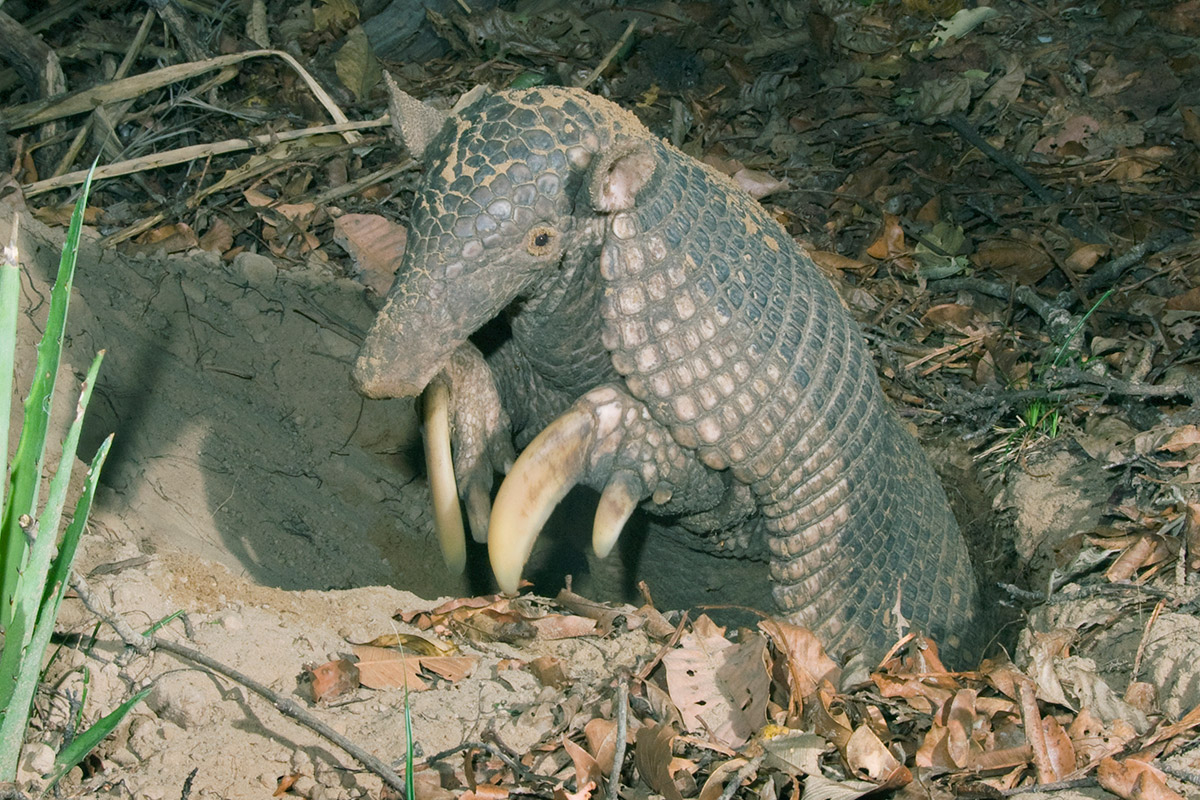
The giant armadillo (Priodontes maximus), biggest of all the armadillos, is a walking armored tank, with hinged bony plates of tough skin covering its body, and 80 to 100 teeth in its mouth — more than any other mammal, according to the Encyclopedia of Life. Its front feet are tipped by three claws; the sickle-shaped central claw is much bigger than the other two, measuring approximately 8 inches (20 centimeters) in length, National Geographic reported. The armadillos use these enormous claws to dig into termite mounds for their insect prey, and for excavating burrows in which they hide and rest.

Mindy Weisberger is a science journalist and author of "Rise of the Zombie Bugs: The Surprising Science of Parasitic Mind-Control" (Hopkins Press). She formerly edited for Scholastic and was a channel editor and senior writer for Live Science. She has reported on general science, covering climate change, paleontology, biology and space. Mindy studied film at Columbia University; prior to LS, she produced, wrote and directed media for the American Museum of Natural History in NYC. Her videos about dinosaurs, astrophysics, biodiversity and evolution appear in museums and science centers worldwide, earning awards such as the CINE Golden Eagle and the Communicator Award of Excellence. Her writing has also appeared in Scientific American, The Washington Post, How It Works Magazine and CNN.


